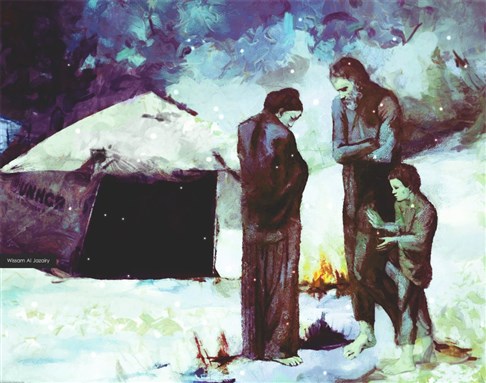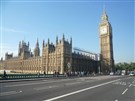They crept through our weakness like ants.
-- Nizar Qabbani, “Footnotes to the Book of Setback”
I. Refugees.
News comes from a team sent by the UN Refugee Agency (UNHCR) to Homs, Syria. They returned to Damascus in late November, reporting that thousands of displaced people in Homs now live in unheated communal shelters. Half the city’s hospitals no longer function, and severe shortages wrack the civilian population. As winter approaches, a lack of blankets, children’s shoes, and warm clothing will become a serious problem -- according to the UN Office for Coordination of Humanitarian Affairs (OCHA) at least 75,000 children required blankets and warm clothes as of 11 November. The team found that UNHCR plastic sheets are used to cover open doorways and windows, blown out in the fighting. “Many children have not been in school for the last eighteen months. Some city hospitals have been converted into communal shelters and sixty percent of Homs doctors have left, along with other medical personnel.” Agencies like the UNHCR work on a shoestring budget. Their Syria operation is run with 350 staff members. Given the scale of the problem, this is miniscule. With winter approaching and news reports already of children suffering in the camps in Jordan from the cold, the UN has its work cut out for it.
There are, startlingly, areas of Homs where the situation seems almost normal. “Half of Homs exists as it did before,” reported Janine di Giovanni in late October. This is the half, largely Alawite with some pockets of Christians, that the regime has started to protect. The tendency appears to be that if pockets of these communities are isolated from the fighting, sectarian fissures will open up and guarantee the Assad regime with a loyal constituency. In other words, security has become a sectarian matter. If one half “exists as it did before,” di Giovanni notes, “The other half is rubble.” The UNHCR went to the second half.
The OCHA now reports that by its conservative calculations close to 2.5 million people inside Syria are affected by the violence (the dead, who number over 40,000 are in addition to this figure). The UNHCR has registered close to half a million refugees in the neighboring countries of Jordan, Lebanon, Turkey, and Iraq. But, as UNHCR’s Chief Communications officer Sybella Wilkes Moumtzis told me, there are “tens of thousands more thought to be in neighboring countries” who are being taken care of by national and non-governmental relief agencies.
The UNHCR reports that refugees fleeing to Jordan have faced “generalized violence” during their transit. I asked Wilkes Moumtzis to define what the agency means by “generalized violence.” She notes simply that “there are daily arrivals of injured people who have to be treated in hospital.” UNHCR Assistant High Commissioner for Protection Erika Feller visited the Za’atri refugee camp in Jordan, which has the highest number of Syrian refugees. She found that “insecurity has extended to the country’s borders in some areas, making flight into neighboring countries particularly dangerous.” This is the reason why the UN has called for safe passage out of Syria. There is also talk among some relief agencies in Jordan that the treatment of the refugees by Jordanian authorities has not been exemplary.
Given the political paralysis on Syria, it is astounding that there is so little attention paid to the simple facts of human suffering. Qatar Charity, the Turkish Humanitarian Relief (which sponsored the Mavi Marmara ship to Gaza), the Algerian Reform and Guidance Charitable Association, Lebanon’s Bible Society, the Norwegian Refugee Council, the Danish Refugee Council, Doctors Without Borders, and other charities have been raising money and sending aid to the refugee camps. Turkey’s Humanitarian Relief warns that about ten million Syrians are liable to starve this winter. The World Food Program reports that Syrians have been cutting back on their household consumption, skipping meals, eating less or eating lower quality food, sending children out to work, cutting back on education and healthcare, and, most dangerously, selling their limited assets for immediate relief. The aid money is simply not enough, and some of it, aid workers tell me, has been misused through strictures of tied aid.
During the worst of the sectarian conflict in Iraq at the time of the US occupation, Syria took in half a million Iraqi refugees. The number has now swelled to a million Iraqis under UNHCR protection. Many of them remained in their Syrian camps, afraid to return home to what they saw as dangerous instability. This year, as Syria tore at the seams, the Iraqis began their transit home (particularly middle-class Iraqis, who had been in the Damascus suburbs such as Seida Zeinab). But hundreds of thousand remain, afraid for what they will find at home, and fearful that they will be discriminated in the emergent Syria. The Iraqi government has opened its borders to fleeing Syrians. The ironies of disruption and social division are too terrible to bear for families who have lost so much of their sense of place.
The West, which is otherwise vocal about this or that outrage, is sparing with its financial support for the agency. The financially weak Lebanese government has gone the extra mile with very little international support, a point made by the World Food Program’s Ertharin Cousins in early November as she toured the camps in the Bekaa Valley. The small (voluntary) tranches from the US government, for example, add up to the low millions (the most current contribution is $9.6 million).
Meanwhile, the USS Eisenhower, whose annual cost of operation is $200 million, has appeared off the coast of Syria – it has other motives than humanitarian assistance.






